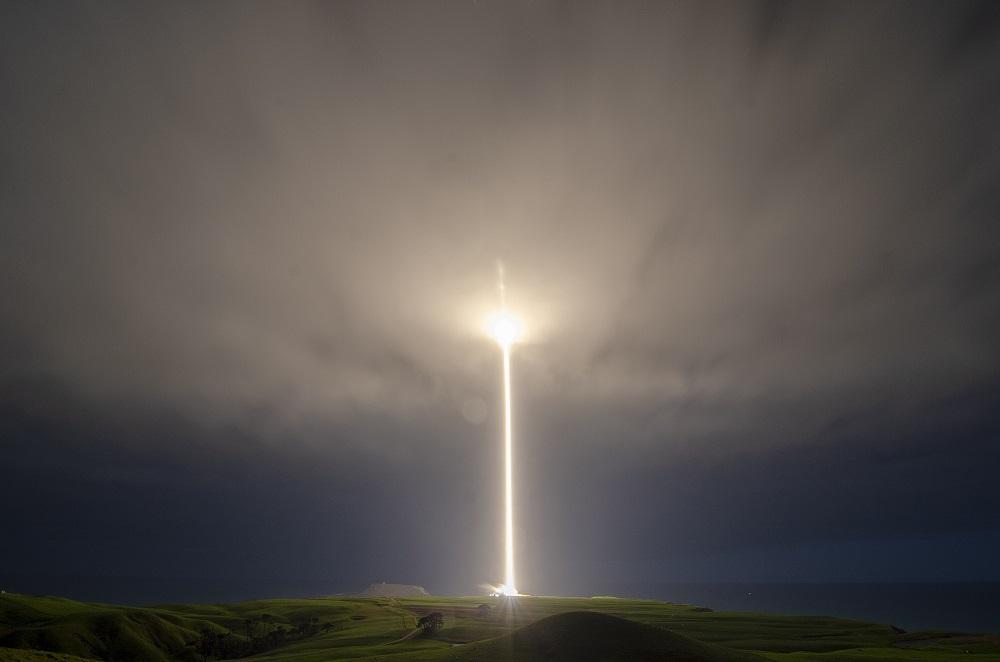
We’re hearing a lot about the need for Australia to develop a sovereign space capability. An article on The Strategist in March warned that Australia risks New Zealand ‘becoming the more commercially attractive location for establishing a launch-dependent space company.’
Shock and horror that the Kiwis should offer something commercially better than anything available in the current Australian business environment.
The NZ launch experience is running several years ahead of Australia with 17 successful launches of 104 small satellites since November 2018 by Rocket Lab’s launch complex on the North Island’s Mahia Peninsula.
These 17 Electron rocket loads have included satellites for NASA, US government agencies, universities and corporations, as well as several Australian companies and universities.
Rocket Lab’s only failed launches occurred just last week and on 4 July last year. Both incidents appear to have been related to second-stage engines on Electron boosters.
Compare this with Australia’s current successful small satellite launch statistics—zip.
So why does Australia need a sovereign launch capability when there’s already a successful one in New Zealand? The answer is very interesting.
Rocket Lab’s location is suitable for launching into sun-synchronous low-earth orbits, or LEO, which mean a satellite can cover the entire earth’s surface, in daylight, once every 24 hours. However, without the benefit launch sites on the equator receive from the earth’s rotational speed, the Mahia Peninsula is not suitable to launch satellites into geo-stationary orbits high above the earth, or to achieve long-distance space travel.
If Australia committed to having most of its government-owned small satellites launched by Rocket Lab in New Zealand, what could we offer New Zealand in return? An equatorial launch site in the far north of Australia could boost rocket launch velocity in the direction of the earth’s rotation.
The closer a launch site is to the equator, the heavier the payload that can be sent up for the same fuel burn. At the equator, a rocket launch site is travelling through space at 1,670 kilometres per hour, compared with 1,635 km/h at Darwin’s latitude (12o 27’ South), 1,292 km/h at the Mahia Peninsula (39o 26’ South) or 1,319 km/h at NASA’s Wallops Island in Virginia (37o 58’ North).
Apart from Rocket Lab’s very sound experience placing small satellites into LEO, it has now developed its Neutron rocket, an advanced 8-tonne payload launch vehicle tailored to launch large constellations of satellites into LEO, or with lighter payloads for geostationary or interplanetary missions and human spaceflight.
Rocket Lab says Neutron will also launch larger civil, defence and commercial payloads that need a level of schedule control and high-flight cadence not available on large and heavy lift rockets. Neutron will be capable of lifting 98% of all satellites forecast to launch through 2029 and will be able to lower costs by leveraging Electron’s heritage, launch sites and architecture.
If Australia and New Zealand combine capabilities, they could use an Australian launch site near the equator. Both countries will be able to despatch heavy Neutron payloads when required.
Rocket Lab’s LC-1A and new LC-1B will enable it to increase the frequency of launches to around 120 per year. It’s licensed for a launch every 72 hours. Rocket Lab New Zealand can launch satellites of up to 300 kilograms from its two co-located complexes. Multiple satellites can be delivered into orbit in a single launch, with individual satellites released from Rocket Lab’s Proton spacecraft on top of the Electron two-stage rocket.
Rocket Lab was founded in 2007 by New Zealand engineer Peter Beck. In 2013 it became a US corporation called Rocket Lab USA and attracted a lot of working capital.
Rocket Lab USA has set up a launch complex at NASA’s Wallops Flight Facility, which is expected to serve primarily government customers.
Earlier this year, Royal Australian Air Force chief Air Marshal Mel Hupfeld revealed planning was well underway for a new ‘space command’ within the RAAF.
The RAAF’s head of capability, Air Vice-Marshal Catherine Roberts, now responsible for designing and shaping air and space power for the joint force, becomes the inaugural head of this new command in January 2022.
Two of its key responsibilities will be protecting satellites used by the Australian Defence Force and its allies for operations, and the establishment of an Australian sovereign constellation of small communications satellites through Joint Project 9102.
Roberts will no doubt also be closely involved with development of Defence’s surveillance satellites.
The numerous satellite launches already planned could provide commercial opportunities for Australian companies.
Editor’s note: An earlier version of this story said Rocket Lab had experienced one launch failure. The article has been updated to include one that occurred on 15 May.